Sewage pumps: types, how to choose the right + operating features
Gravity drainage in a private house is not always possible to equip. Then, to remove fecal effluents from the cottage, it is necessary to install sewage pumps, creating a forced pumping system.
The pumping equipment market offers a wide range of units. But, you see, the variety of models can be confusing and make it difficult to choose.
We will help you in resolving the issue. The article identifies the main types of sewage pumps, describes their strengths and weaknesses. In order not to make a mistake with the purchase, we propose to adhere to a special algorithm for evaluating the characteristics and decisive factors of choice.
The content of the article:
Hydraulic pump in a forced sewer system
To correctly choose a pump, you need to understand all its modifications and take into account many factors.
Most often, the sewage system is designed so that the drains in it move by gravity. But not always local septic tank or input into a centralized sewage system is located below the sewer pipe and all plumbing fixtures in the house.
Wastewater alone cannot rise upward; you have to “force” it with a pump.
Pumping equipment is installed when, due to the terrain or other features of the house area outdoor sewer pipes It doesn’t work to lay under the necessary slope.
It is also possible option with the completion or redevelopment of the building. The configuration of internal pipelines and the volume of effluents are changing, the latter alone can no longer be removed from the residential building.
The most popular version of the sewage system with forced pumping of effluents involves a device in the basement of the cottage of an intermediate drive. As it is filled to the brim, the pump is turned on, pumping liquid into the street for further cleaning or removal.
But you can install a compact pumping unit, which is included only when draining the effluent. However, if it breaks down, the house will actually remain without a sewer.
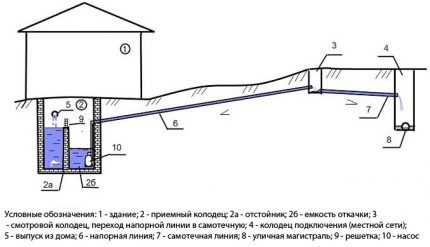
Compared with a gravity flow system, the use of pressure pumps provides several advantages:
- Ease of maintenance. The frequency of cleaning pipelines is reduced, since the intensive movement of effluents contributes to their self-cleaning.
- Variability of equipment location. Sanitary and household appliances with connection to the sewer can already be installed anywhere without taking into account the need to form a bias towards the outlet of the sewer, and then the drive or septic tank.
According to technical regulations (SNiP numbered 2.04.03-85), the smallest diameter of the pipes of the external main of the pressure sewer network is accepted 150 mm, if a general alloy drainage is arranged.
These are networks transporting storm drains together with household black and gray. Household gravity systems are arranged from pipes of a similar size.
If fecal effluents are discharged separately, the diameter of the pipeline is assumed to be filled to 0.7 of its maximum height. This distance is necessary for ventilation and the ability to remove unpleasant and explosive gas.
The size of the sewer pipeline must be taken into account when choosing a pump in order to accurately select the unit for the upcoming load.
The forced system is volatile and costs a lot of money than gravity. If the family is small, then the drive does not fill up immediately, the sewage pump will be enough to turn on from time to time.
However, with large volumes of wastewater, pumping equipment should work almost constantly. In this case, a power outage can cause serious problems.
Most of the costs for a sewage pump can be recaptured by using cheaper and thinner pipes, as well as reducing the cost of their installation. But after installation, this equipment needs constant maintenance, which requires some money.
If we add an uninterruptible power supply to the circuit in case of an accident on the power grid, then the benefit is zero.
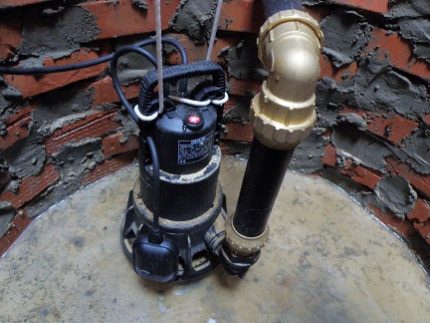
If there is an opportunity to get by with the gravity drainage option, then it is worth doing it. A pressure system with a sewage pump for viscous and contaminated liquids should only be selected as a last resort. And special attention should be paid to the competent choice of pumping equipment.
Types of pumps for pressure sewer
The most important thing in choosing pumping equipment for pumping sewage is to clearly separate it from drainage units and water-lifting equipment for drinking wells.
The last two options are intended exclusively for pumping clean water or with fine fractions of water. If harder feces or debris gets inside, they will simply break.
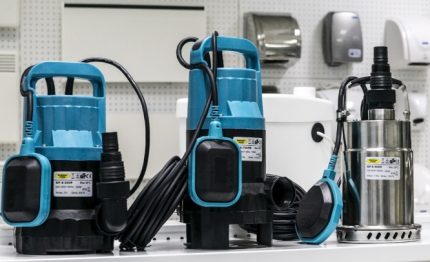
A special sewage pump is designed specifically for pumping sewage with all household waste that falls into the drain from sinks, toilets, dishwashers and washing machines.
Moreover, the best option is choose equipment with a grinder. Such an aggregate grinds all the debris before it gets inside the pump draining the effluent.
In general, fecal pumps are used for:
- pumping sewage in sewage networks with forced current;
- pumping sludge from cesspools, septic tanks and pits of street toilets;
- pumping water from cellars and cellars;
- purification of pipes and wells of sewage from mud sludge.
A standard drainage pump will not work. Its impellers will quickly clog, and then the motor will overheat due to sharply increased loads.
Type # 1: Immersion Devices
This type of pump with the whole body is immersed directly in the sewer. All elements of their design are made of stainless steel or cast iron, so that in contact with an active and aggressive environment does not instantly fail.

Usually this pumping equipment works automatically. When the tank is filled with sewage, a float rises with them, which, at a certain level of liquid, includes a pumping unit. As soon as the tank is empty, the pump is switched off by the float switch. Dry running is virtually impossible.
Submersible models are chosen because of their high performance and equipped with a chopper. The cutting mechanism of the latter grinds any large waste to sizes that do not pose a threat to pumping equipment.
Almost all sewer submersible pumps come with a built-in chopper, the rotating knives of which easily cope with paper, fibrous objects and solid inclusions.
Type # 2: Surface Models
Surface pumps for pumping sewage are installed next to the collector that collects and redirects drains, or in a viewing well that is most convenient for its placement.
This is the so-called dry mounting option. Often they are also called pumping units of a forced sewer system due to the presence of several individual parts assembled together.
In this case, contaminated drains are sucked through a hose connected to the pump unit, which descends to the bottom of the storage tank. When choosing this model, special attention should be paid to the parameters of the suction depth specified by the manufacturer.
Usually this is up to 8–10 m, from great depths it simply will not be able to raise drains from the storage tank. In this case, it is necessary to take into account not only the height of the tank, but also the distance from it to the pump.
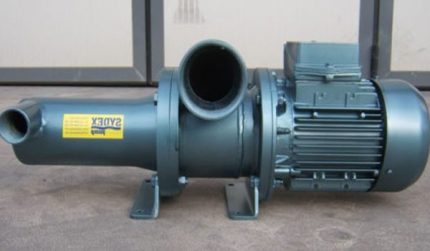
The low-power surface pump for operation in forced sewage is a compact unit that is simply installed next to the sewage collector. Installation of more powerful models is carried out on a specially prepared place with reliable fixing of the device to the floor.
When installing an outdoor pump, it is imperative that you protect it against moisture. Unlike a submersible analog, it is fundamentally not designed for operation in a humid environment. Its body has minimal protection from water, if it gets inside it may short circuit.
The surface pump is inexpensive and easy to operate, but noisy enough. For installation in a basement or a heated utility room, it is better to take it.
However, if you only need to turn on the equipment from time to time for pumping out the septic tank, it is better to prefer a submersible option.
Type # 3: Semi-submersible plants
These models are a kind of intermediate option between the submersible and the external view of the pumping equipment. They have an electric motor installed next to the tank above the water, and the working chamber is immersed in sewage. Between themselves, these two parts of a single installation are connected by a rotating shaft.
Installation of a semi-submersible pump can be done on:
- a pillow floating on the surface of drains;
- pad next to the tank;
- tank wall.
Initially, standard semi-submersible equipment comes without a chopper. It can be installed only in the form of an additional nozzle, which complicates the maintenance of this pumping equipment and leads to its cost increase.
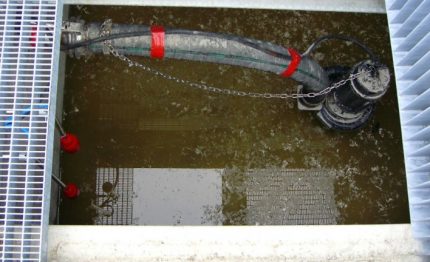
Type # 4: Small Plumbing Drain Units
Under the sewer pump for the toilet or wash basin means small-sized equipment installed next to the plumbing. Drains from the latter first fall into a small tank, and from it they are already pumped into the general sewage system.
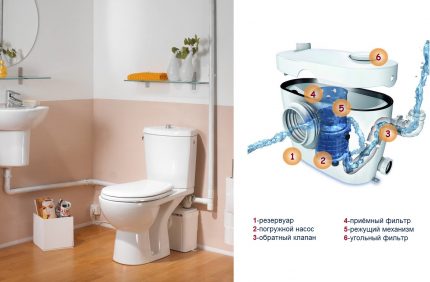
Such equipment is quite expensive, but it allows you to mount plumbing in any convenient place. The pump, when filling the plumbing tank, pumps out sewage into the riser, even if it is tilted upward.
Usually, pumps for toilets with a grinder practically do not require maintenance. Structurally, self-cleaning of the storage tank is incorporated in them. And to exclude the appearance of unpleasant amber, a carbon filter is provided inside.
No special skills are required to connect this pump, just remember to wash the drive from time to time.
Here are the approximate prices for such units:
Which is better - submersible or superficial?
With the same pressure at the outlet, the submersible sewage pump consumes less power than its external self-priming analog. The first simply does not have to spend energy on the absorption of effluents from the bottom of the tank to the working chamber. All electric motor power is spent on creating pressure in the pressure line.
A pump completely immersed in drains emits noise an order of magnitude less than that installed on the surface. Water absorbs most of the sounds made by the electric motor and the rotating working elements of the pump.
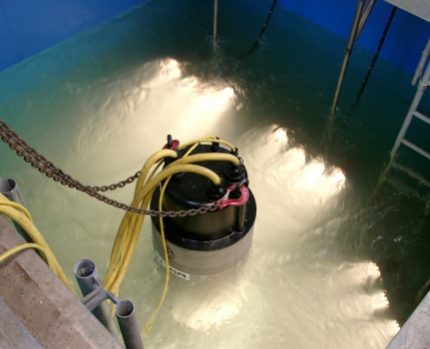
For ease of use, the palm can be given to the surface model, but only if it is compact and portable. Plus, the correctness of its operation can be controlled simply by the noise emitted. If the electric motor does not work properly, extraneous sounds appear that immediately indicate problems.
Other things being equal and additional equipment, a surface pump station will almost always cost less than a submersible sewage pump. Of course, a lot depends on the manufacturer and competition in a particular region.
However, a technique immersed in sewage is by definition more technologically advanced and more complex, which leads to its higher price.
How to choose the right pumping equipment?
When choosing a pump for pumping sewage, it is necessary to pay attention to the many technical characteristics indicated in his passport.
For example, performance parameters can help you estimate how long a tank with drains can be emptied. The higher this indicator, the more the unit will be able to pump liquids, but also the more it consumes energy for this. There are many other nuances.
The first factor is maximum head and lift height
The pressure indicator determines the height to which the sewage pump can raise the drains along the pressure line. But here it is important to understand that in addition to the vertical there is also a horizontal section of the branch pipe.
Simply, to calculate this parameter, the horizontal distance is divided by ten and added to the meter vertical from the pump to the edge of the tank.
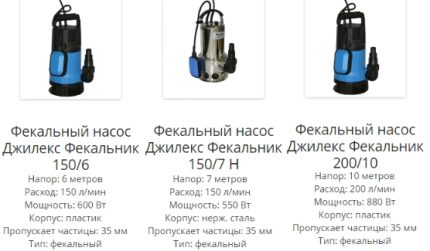
However, this calculation is very simplified, if everything is done according to the rules, then you need to consider:
- the composition and temperature of the liquid, as well as the size of the impurities in it;
- roughness level of all pipes (material of their manufacture);
- pressure loss during passage of stop valves;
- diameter of pipelines;
- Atmosphere pressure;
- speed of movement of drains and much more.
All this should be taken into account in the design of the sewer system, which only a highly competent engineer can competently do. If there is no relevant knowledge, then consultations are indispensable.
Or you have to take a pump for pumping sewage drains with a large margin of power and pressure, otherwise it will not work for a long time.
The second factor is operating temperature.
All pumping equipment for domestic sewers is divided into two categories:
- for cold drains - with operating temperature up to 450WITH.
- for hot drains - with operating temperature up to 900WITH
If only cold water is drained into the sewer system, then it is better to take the first option, which is cheaper. In most cases, such pumps are installed in cottages. In fact, boiling water can enter the sewer of a private house only in case of emergency discharges from the heating system.
The third factor is the availability of automation
Managing the sewage pump manually, constantly turning it on and off is problematic. You will need to be in close proximity to the equipment.
It is much better if the complete set of pumping equipment includes:
- Float - the determining level of effluents in the storage tank to start and turn off the equipment.
- Thermal relay - triggered by a critical increase in the temperature of the electric motor to turn it off before overheating.
To reduce the likelihood of clogging of the sewage pump with an integrated grinder, some manufacturers provide for self-cleaning of its cutting mechanism.
This allows you to increase the periods of operation of the unit without interruptions and stops for maintenance. Spontaneous cleaning ensures a reduced likelihood of overheating of the drive.
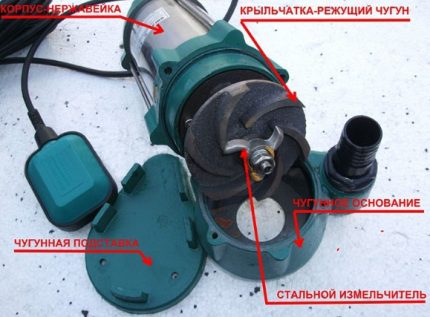
The fourth factor is power supply and housing material
It is possible to power various models of sewage pumps from a single-phase and three-phase mains.
The first option is cheaper and preferable in conditions of domestic reality, so in case of problems with voltage it can be connected through a stabilizer or simply connected to a portable generator.
For three-phase pumping equipment, additional control panels will have to be purchased to protect it from phase imbalance in the electrical network. And this is additional money and difficulties in connecting.
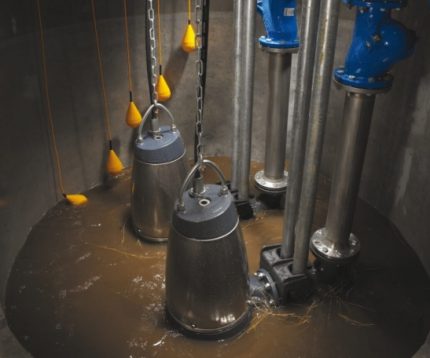
Often the casing of the pump installation is made of cast iron or stainless steel. Plastic analogues are cheaper, but in an aggressive environment they will last less without repair.
A compromise between cost and reliability can be considered equipment with a plastic case, but metal working elements.
The choice of pump also depends on the expected loads. At arrangement of sewerage in the country with seasonal living, small-capacity surface or submersible units are suitable.
To organize the drainage of a private house, it is better to use sewage pumping station.
Conclusions and useful video on the topic
How to choose the drainage and fecal pump:
Overview of the submersible sewage pump with grinder:
Compact pumping equipment for tapping into a sewer pipe in a house:
The choice of pumps for pumping wastewater from the sewage system is huge. It is difficult to navigate this issue without competent recommendations.
Before you go to the store, you need to determine the performance, the height of the effluent and the operating temperature of the equipment. If you take the equipment with a margin in all respects, then you can greatly overpay, and with misses in the calculations, it will quickly fail.
All visitors to the site who are interested in the issue of choosing and using a sewage pump are invited to leave comments and ask questions. The contact form is located in the lower block.

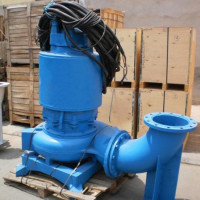 Types of fecal pumps: how to choose the right equipment for your needs
Types of fecal pumps: how to choose the right equipment for your needs  Domestic sewage pumping stations: types, design, installation examples
Domestic sewage pumping stations: types, design, installation examples 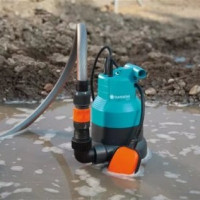 How to choose a fecal pump for a summer residence: an overview of the types and rules for selecting equipment
How to choose a fecal pump for a summer residence: an overview of the types and rules for selecting equipment 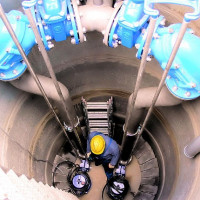 Sewer pump station (KNS): types, device, installation and maintenance
Sewer pump station (KNS): types, device, installation and maintenance 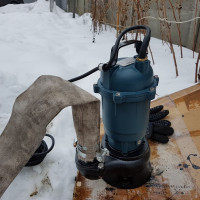 Fecal pump with grinder: selection tips and an overview of the best brands
Fecal pump with grinder: selection tips and an overview of the best brands 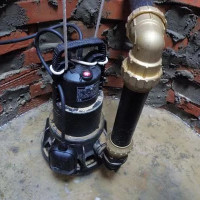 Cesspool pump: selection tips + review of the best brands
Cesspool pump: selection tips + review of the best brands  How much does it cost to connect gas to a private house: the price of organizing gas supply
How much does it cost to connect gas to a private house: the price of organizing gas supply  The best washing machines with dryer: model rating and customer tips
The best washing machines with dryer: model rating and customer tips  What is the color temperature of light and the nuances of choosing the temperature of the lamps to suit your needs
What is the color temperature of light and the nuances of choosing the temperature of the lamps to suit your needs  Replacement of a geyser in an apartment: replacement paperwork + basic norms and requirements
Replacement of a geyser in an apartment: replacement paperwork + basic norms and requirements
At one time, I read a bunch of information about sewage pumps.At the cottage there is also a high level of groundwater, therefore, it was necessary to arrange the sewerage with the transportation of effluents to the drive. For pumping from the storage tank, it was necessary to constantly call special services. I decided to buy a pump and not suffer. At that time, there were only stainless steel drainage models in the store, I installed it myself. Well, what can I say, I have nothing special to compare with, but he completely copes with his work. I am satisfied, but it’s better than calling people and paying them a considerable amount.
I am looking for a fecal pump. I liked the option from the video of Igor Balabay, made in Poland, because chopping knives are available! I want to clarify the model.
Most likely, this is a video that you found yourself, and not about one of the three attached to this article. A search by the name of the author of the video did not give anything, because too many irrelevant results were returned.
If you are interested in fecal pumps with a grinder, then I can recommend some good models:
1. WQEURO DELTA 12 SWP 1.1;
2. EURODELTA WQS 2.5;
3. POLAND (DELTA 1.1);
4. EURO ForWateR 2.5kW.
All pumps are made in Poland, the first three are made by the famous brand Euroaqua. All fecal pumps from the list are equipped with grinders. If you look at the photos, they really look like legs. Give a link to the video so that I can recommend exactly the model that interests you. If she is not in this list.